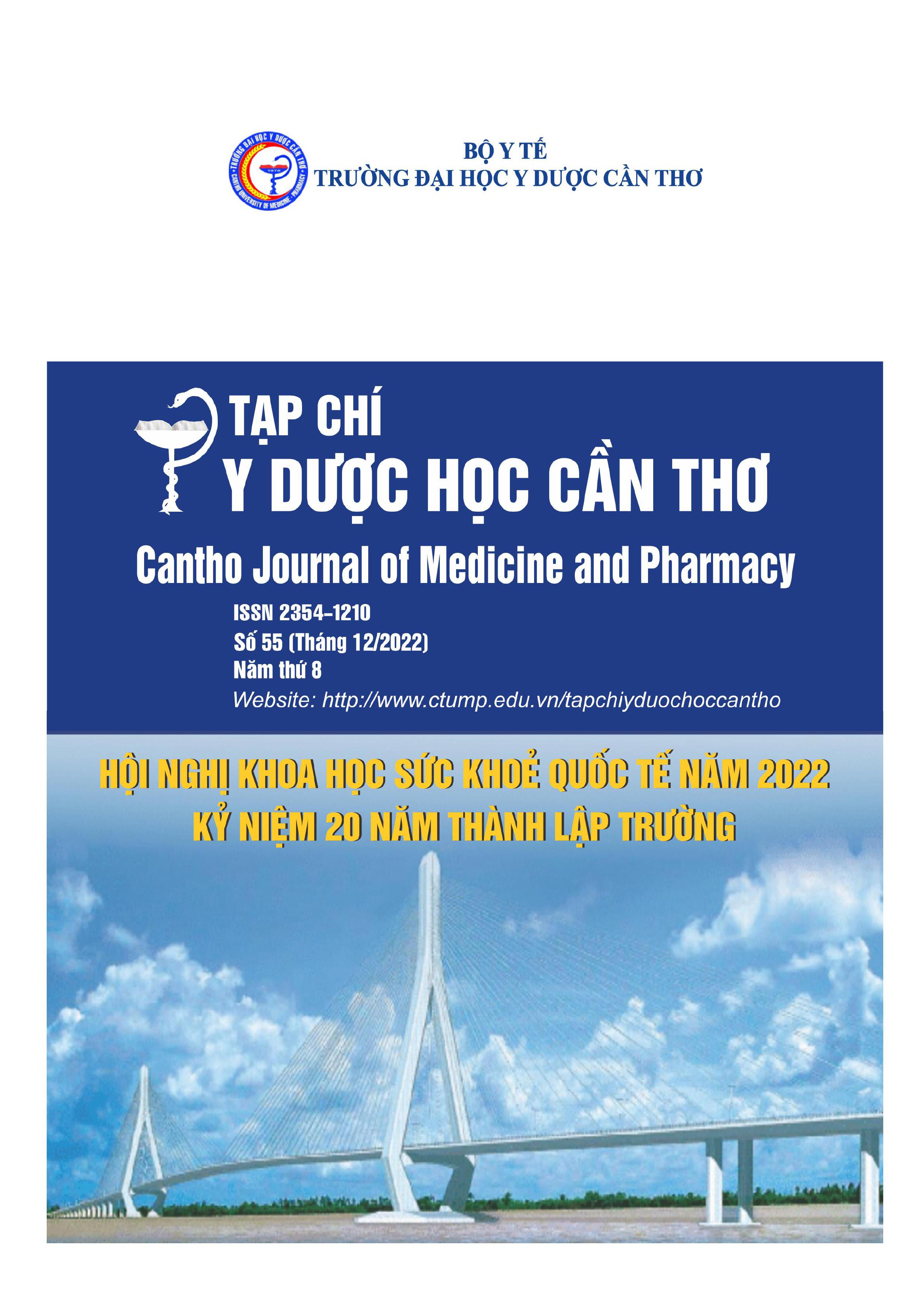DEVELOPMENT OF EXTRACTION FOR PHENOLIC COMPOUNDS AND PRELIMINARY ASSESSMENT OF ANTIOXIDANT ACTIVITY OF RUELLIA TUBEROSA L.
Main Article Content
Abstract
Background: Ruellia tuberosa L. is a wild plant in the Acanthaceae family. The previous research on this plant showed antioxidant activity potential. Objectives: 1. To evaluate the in vitro antioxidant activity of extract; 2. Development of extraction procedure and chromatographic conditions for phenolic compounds in the root of Ruellia tuberosa L. extract. Materials and methods: Ruellia tuberosa L. was collected in Hau Giang province and was ultrasonically extracted with five solvents including methanol, ethanol, acetone, ethyl acetate, chloroform, and total phenolic content were determined by HPLC. Evaluated antioxidant activity by ABTS●+, DPPH, and FRAP. Results: The antioxidant activity of methanol, acetone and ethanol extracts in roots showed stronger antioxidant capacity than whole plant extracts. When methanol was selected as the extraction solvent, next investigated the ratio of methanol and methanol was. The results have shown that the methanol: water (70:30) extracted the phenolic group in the roots of Ruellia tuberosa L. extract with the highest efficiency. Conclusion: Phenolics in the root extract of the plant were higher than that of the whole plant and when extracted with methanol: water (70:30), the extraction yield of phenolics was highest.
Article Details
Keywords
Ruellia tuberosa L, phenolic compounds, anitoxidant, ABTS, DPPH, FRAP
References
2. A.Safitri, A Roosdiana, N Arrochmah and S S Nur’Adya (2019), Anti-diabetic properties of root extracts of Ruellia tuberosa L: effects on serum enzyme activity. Journal of Physics: Conference Series.
3. Anna Roosdiana, Fajar Shodiq Permata, Riera Indah Fitriani, Khairul Umam, Anna Safitri (2020), Ruellia tuberosa L. Extract Improves Histopathology and Lowers Malondialdehyde Levels and TNF Alpha Expression in the Kidney of Streptozotocin-Induced Diabetic Rats. Veterinary Medicine International.
4. Bo Eng Cheong, Mohd.Zulkarnain Waslim, Fui Fui Lem, Peil Lin Teoh (2013), Antioxidant and anti-proliferative activities of Sabah Ruellia tuberosa. Journal of Applied Pharmaceutical Science, 3(12), pp.20-24.
5. Blois, M.S. (1958), Antioxidant Determinations by the Use of a Stable Free Radical. Nature, 181, pp.1199-1200.
6. Campos MG and Markham KR (2007), Structure information from HPLC and on-line measured absorption spectra: Flavones, Flavonols and Phenolic Acids, Coimbra University Press, Coimbra, Portugal, pp.11-29.
7. Chwan-Fwu Lin, Yu-Ling Huang, Lee-Ying Cheng, Shuenn-Jyi Sheu, Chien-Chih Chen (2006), Bioactive flavonoids from Ruellia tuberosa. Chinese Medical Journal, 17(3), pp.103-109.
8. Chothani, D. L., Patel, M., Mishra, S., Vaghasiya, H. (2010), Review on Ruellia tuberosa (Cracker plant). Pharmacognosy Journal, 2(12), pp.506-512.
9. Guo, L., Zhang, Y., Li, Q. (2009), Spectrophotometric determination of dopamine hydrochloride in pharmaceutical, banana, urine and serum samples by potassium ferricyanide-Fe(III). Analytical Sciences, 25, pp.1451-1455.
10. Krishna Chaitanya.B, Ravindra Babu.S, Ramesh. C, Alekhya Ravella, Jayasree Vardhan, et al. (2012), Hypolipidemic and anti oxidant activity of Ruellia tuberosa Linn.. International Journal of Pharmacy and Biological Sciences, 2(3), pp.63-72.
11. Rajendra kumar N, Vasantha K, V.R. Mohan, (2014), GC-MS Analysis of Bioactive Components of Tubers of Ruellia tuberosa L. (Acanthaceae). American Journal of Phytomedicine and Clinical Therapeutics, pp.209-216.
12. Ramadhan, M., Sabarudin, A., Safitri, A. (2019), In Vitro Anti-microbial Activity of Hydroethanolic Extracts of Ruellia tuberosa L.: Eco-friendly Based product Against Selected Pathogenic Bacteria. IOP Conference Series: Earth and Environmental Science, 239, 012028.
13. Re R, Pellegrini N, Proteggente A, Pannala A, Yang M, Rice-Evans C. (1999), Antioxidant activity applying an improved ABTS radical cation decolorization assay. Free Radical Biology & Medicine, 26, pp.1231-1237.
14. Rajendra kumar N, Vasantha K, V.R. Mohan (2014), GC-MS Analysis of Bioactive Components of Tubers of Ruellia tuberosa L. (Acanthaceae). American Journal of Phytomedicine and Clinical Therapeutics, pp.209-216.
15. S. Dutta, K. Hazra, S. Ghosal, D.Paria, J. Hazra and M. M. Rao, (2020), Morpho-anatomical and phytochemical characterisation of traditionally used plant Ruellia tuberosa L. leaves and roots. International Journal of Pharmacognosy, 7(1), pp.12-22.
16. Supawana Khachitpongpanit, Supawatchara Singhatong, Thanapat Sastraruji and Churdsak Jaikang (2016), Phytochemical study of Ruellia tuberosa chloroform extract: antioxidant and anticholinesterase activities. Der Pharmacia Lettre, 8(6), pp.238-244.


